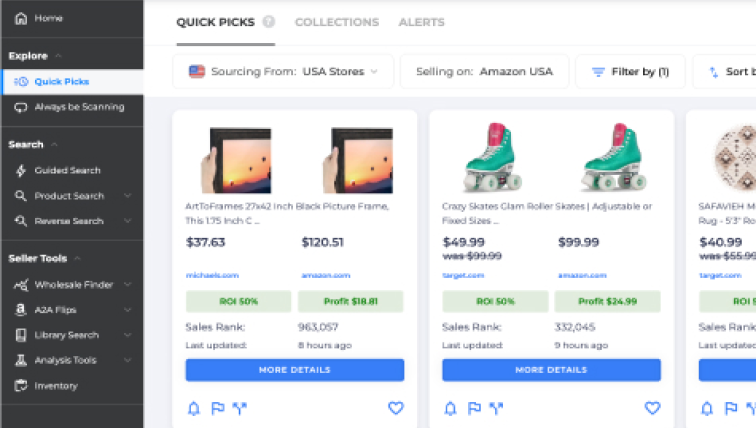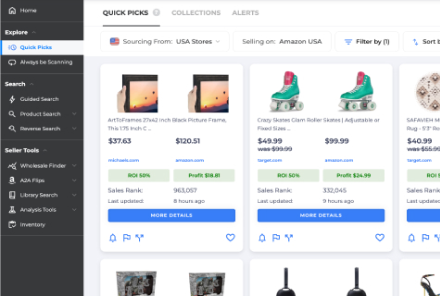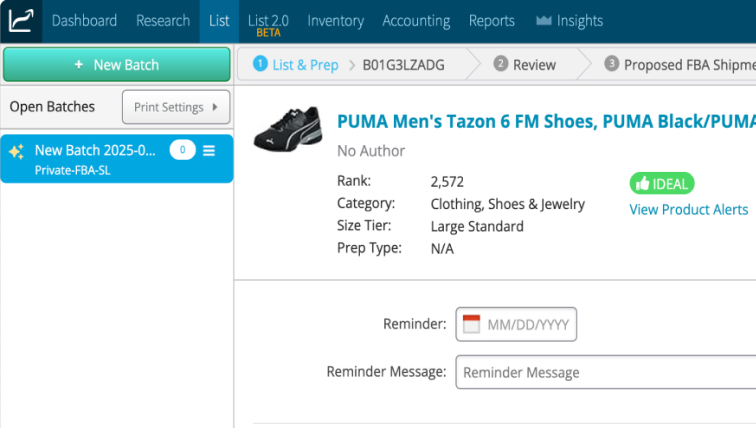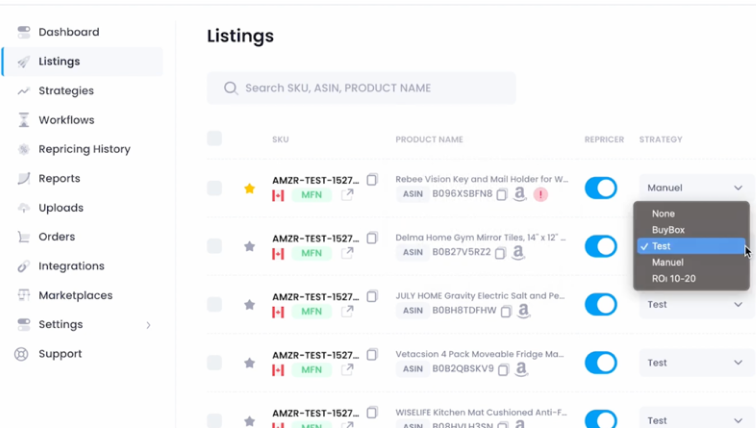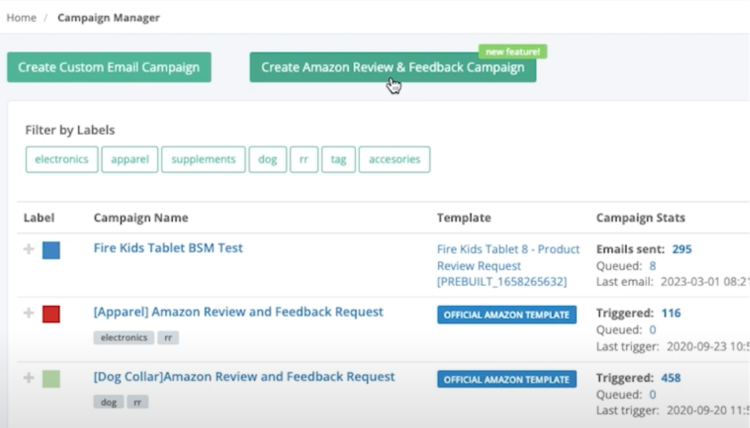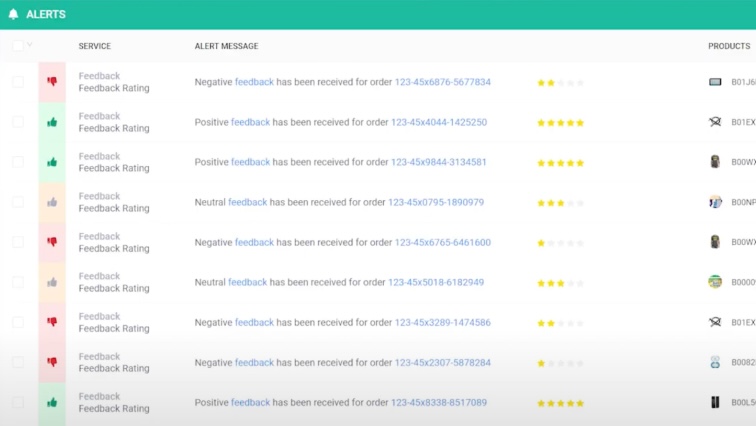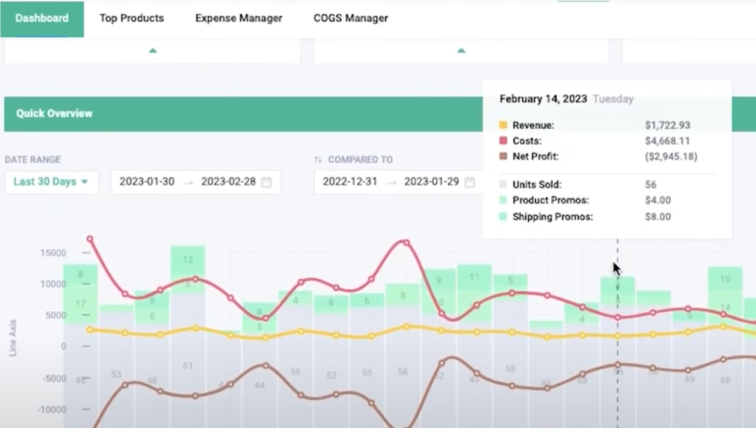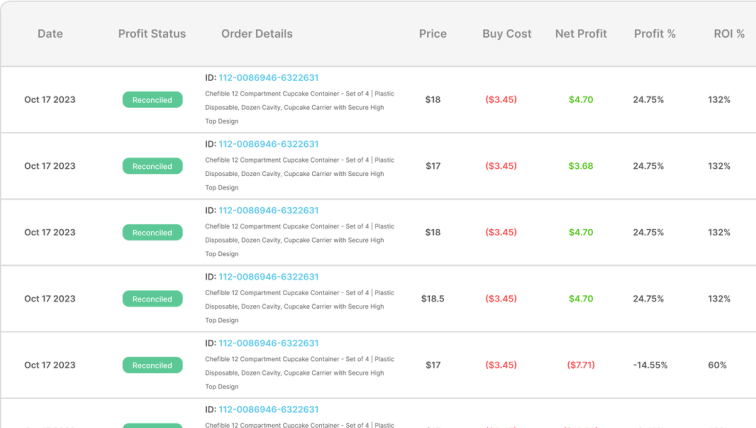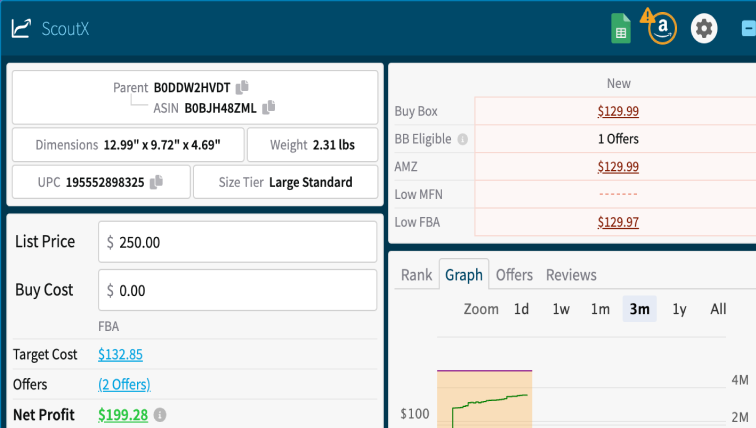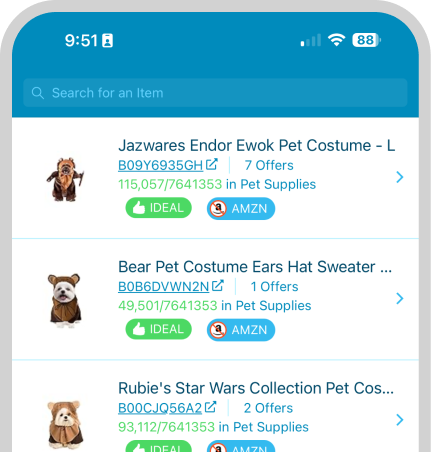If yes
If no
Discover Seller 365, Perfect for Growing Businesses - Learn more
Trusted by everyone

Chris Grant
12 years selling on Amazon

Chaz Leslie
9 years selling on Amazon, Walmart & eBay

Jim Cockrum
25 years online selling

Nikki Kirk
7 years selling on Amazon

James Percival
16 years selling on Amazon, Walmart, & eBay

Noah Mincis
8 years selling on Amazon, Walmart, & eBay

Chris Mangunza
8 years selling on Amazon

Cris Beam
4 years selling on Amazon

Chris Grant
12 years selling on Amazon

Chaz Leslie
9 years selling on Amazon, Walmart & eBay

Jim Cockrum
25 years online selling

Nikki Kirk
7 years selling on Amazon

James Percival
16 years selling on Amazon, Walmart, & eBay

Noah Mincis
8 years selling on Amazon, Walmart, & eBay

Chris Mangunza
8 years selling on Amazon

Cris Beam
4 years selling on Amazon

Chris Grant
12 years selling on Amazon

Chaz Leslie
9 years selling on Amazon, Walmart & eBay

Jim Cockrum
25 years online selling

Nikki Kirk
7 years selling on Amazon

James Percival
16 years selling on Amazon, Walmart, & eBay

Noah Mincis
8 years selling on Amazon, Walmart, & eBay

Chris Mangunza
8 years selling on Amazon

Cris Beam
4 years selling on Amazon
Your reality as a seller today and how we help you.
As a seller, you are getting squeezed from every direction. Rising fees, expensive software, and the need to pay for multiple services. That ends here. Threecolts is committed to give sellers everything they need to succeed at prices that don't break the bank.
Because when sellers win, everyone wins.
Introducing Seller 365.
10 apps. 1 subscription.
$69/month.
The all-in-one seller software bundle. Source smarter, prep & ship quicker, win the sale, and manage your profitability.
What can you do with your Seller 365 bundle?
In short, everything!
Find products that sell.
For online arbitrage, use:
Tactical Arbitrage
For book flipping, use:
ScoutIQ
For Amazon research, use:
Scout X
For retail arbitrage, use:
Scoutify
Win more sales.
For price automation, use:
SmartRepricer
For reviews management, use:
FeedbackWhiz Emails
For monitoring listings, use:
FeedbackWhiz Alerts

Manage your profit.
For multichannel reporting, use:
FeedbackWhiz Profits
For tax-ready accounting, use:
InventoryLab Accounting

Seller 365 is
for everyone
Resellers
Benefit from our comprehensive tools to streamline your sourcing, listing, selling, and profit management processes. Grow your business by identifying the most profitable products and optimizing your operations.


Private label
Use Seller 365 to build and scale your own brands.
With one subscription, you get all the tools you need to optimize pricing, manage inventory efficiently, and track sales and profits.
Prep centers
Streamline your fulfillment operations with Seller 365. Our platform offers features to optimize your workflows, manage inventory, and ensure timely order fulfillment.
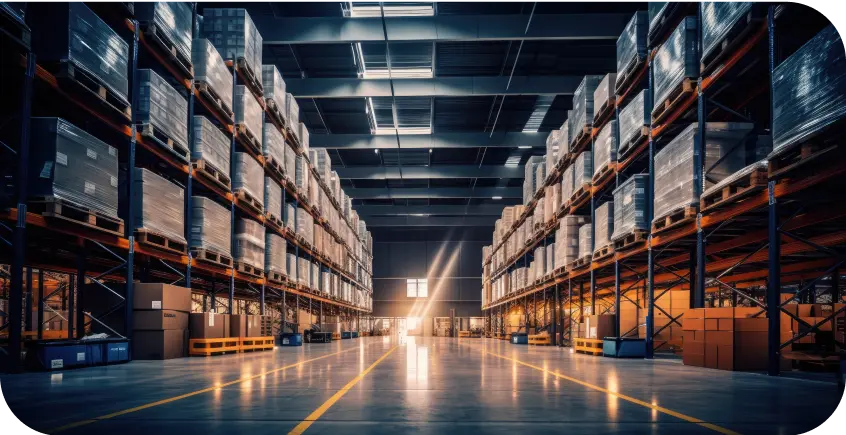
Companies, brands, vendors, and D2C:
Explore our powerful solutions for your unique needs

Doing $1M+ in sales?
Maximize profits with
Margin Pro.
Margin Pro helps $1M+ sellers unlock hidden profits through automated marketplace reimbursements as well as supply chain and shipping cost optimization. Learn More

Unite multichannel
operations into one
powerful platform
Multichannel Pro unifies all your sales channels into one powerful platform, helping you lower your costs by 30% while delivering 4x faster customer service. Learn More

Chris Grant
Founder of Clear The Shelf Co-Creator of The OA Challenge, revROI, IP Alert, The Wholesale Challenge, and Amazon to Amazon Flips Challenge
At a glance
- 100,000+ items sold
- Multi-7-figures sold across marketplaces
- 4,000+ sellers coached
Actively selling on:
- Amazon
- Walmart
- Ebay
How Chris transformed ecommerce operations with Seller 365.
Chris says: Chris says: "Since discovering Tactical Arbitrage and InventoryLab, now part of the Seller 365 bundle, our Amazon business has completely transformed. Tactical Arbitrage is the perfect supplement to manual sourcing – it's agnostic to category or niche and uses data only to help you find profitable products to flip on Amazon. The tool has been invaluable in helping us find rabbit trails to new products and niches we've never thought of. Now that sellers can get access to the entire suite of tools from Threecolts inside of Seller365, I expect people will see profits multiply over the coming years."
Learn from
Chris.
YouTube: Clear The Shelf 500+ tutorials and reselling videos
Instagram: @cleartheshelf
Facebook: @cleartheshelf
See how other sellers are thriving with Threecolts
Get inspired by their journeys and see how our tools can help grow your business.

Chaz Leslie
Founder of Network Prep & The Sellers Network
At a glance
- $1,000,000+ in marketplace sales
- 40,000+ items sold successfully
- 9 years of Amazon, Walmart & eBay selling experience
- 140,000+ YouTube subscribers
- 3,000+ marketplace sellers coached
- 2,000,000+ items shipped through Network Prep
Actively selling on:
- Amazon
- Walmart
- Ebay
How Chaz transformed ecommerce operations with Seller 365
Chaz says: "The tools in Seller 365 have revolutionized my Amazon business. Tactical Arbitrage simplified the sourcing while InventoryLab allowed us to save hours per week with its smooth workflows and reporting!”
Learn from
Chaz.
YouTube: Side Hustle Network 500+ tutorials and reselling videos
Instagram: @TheSideHustleNetwork | @NetworkPrepCenter
Website: NetworkPrep.com
Join Chaz’s training sessions.
Discord Community: The Sellers Network Weekly live Zoom training sessions
Exclusive access to sourcing leads Step-by-step guides, and community challenges
See how other sellers are thriving with Threecolts
Get inspired by their journeys and see how our tools can help grow your business.

Jim Cockrum
Founder of Proven Amazon Course and The Proven Conference
At a glance
- Founder of The Proven Conference, the world’s longest-running Amazon seller event
- $50,000,000+ in online sales
- 25+ years of selling experience
- 1,000,000+ copies sold of his book, Silent Sales Machine
Actively selling on:
- Amazon
- Ebay
See how other sellers are thriving with Threecolts
Get inspired by their journeys and see how our tools can help grow your business.

James Percival
Founder and Lead Editor of The Selling Guys
At a glance
- $10,000,000+ in online sales
- 100,000+ marketplace sales
- 16 years of ecommerce experience
- 40,000+ Amazon seller community members
- Order fulfillment partner for Walmart, Tesco, and Staples
Actively selling on:
- Amazon
- eBay
- Walmart
Why James uses Threecolts.
James says: "I’ve spent 16 years selling through multiple channels and business models. At The Selling Guys, we’ve found Tactical Arbitrage to be a great tool for automating product sourcing, making Amazon online arbitrage a viable option”
The impact on my business operations:
- Tactical Arbitrage saves hours of manual work with scans of over 1,500+ stores.
- Gives detailed analysis with Product Search, Quick Picks, and Reverse Search.
- Can tailor results with custom filters, focusing on ROI, sales rank, and prep costs.
- Automates searches and alerts with unlimited scan minutes.
- Can access free training through Threecolts University.
Learn from
James.
Facebook: @TheSellingGuys
Twitter: @TheSellingGuys
LinkedIn: James Percival
Website: TheSellingGuys.com
See how other sellers are thriving with Threecolts
Get inspired by their journeys and see how our tools can help grow your business.

Noah Mincis
Multi-marketpalce seller Founder of Walmart Mastery
At a glance
- $16,000,000+ in marketplace sales
- 150,000+ sales across platforms
- 8 years of ecommerce experience
- 1,000+ Walmart sellers coached
Actively selling on:
- Amazon
- Walmart
- eBay
- Target
- Shopify
How Noah uses Threecolts to power his business.
Noah says: "I've used Threecolts' software extensively for both Amazon and Walmart, and it's been a game changer for my ecommerce business. The tools are intuitive and efficient, making inventory management and price optimization seamless. I highly recommend it to anyone looking to streamline their online selling operations and maximize profits. With FeedbackWhiz, I can effectively manage and improve my listings, ensuring I win the Buy Box while maintaining healthy profit margins.”
The impact on my business operations:
- Gain a competitive advantage by quickly finding profitable products and market trends.
- Win the Buy Box while maintaining healthy profit margins.
- Efficient inventory analysis and customer feedback management.
- Improve my customer service and brand reputation through automation.
Learn from
Noah.
YouTube: Noah Mincis
Join Noah’s training sessions.
Walmart seller training: Walmart Mastery Program
See how other sellers are thriving with Threecolts
Get inspired by their journeys and see how our tools can help grow your business.

Nikki Kirk
Founder of Your Selling Guide
At a glance
- $1,000,000+ in Amazon sales
- Coached over 8,000 sellers since 2019
- 7 years of Amazon experience
Previously sold on:
- Amazon
- Walmart
- eBay
- Poshmark
- Shopify
Why Nikki believes in Threecolts.
Nikki says: "As a dedicated retail arbitrage seller, I've relied on Threecolts' products for over three years. Scoutify's Buy List feature seamlessly integrates with InventoryLab, dramatically streamlining my FBA shipment process. The comprehensive inventory dashboard helps me track warehouse stock and forecast sales potential with ease. Combined with Tactical Arbitrage's versatile scanning capabilities, these tools have become essential to my Amazon business success, helping me discover unique product opportunities that others might miss.”
Learn from
Nikki.
See how other sellers are thriving with Threecolts
Get inspired by their journeys and see how our tools can help grow your business.




































